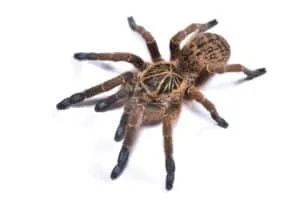Tarantulas, with their imposing size and captivating behaviors, have become increasingly popular pets. One of the most common questions from potential and current owners is, “How long do tarantulas live?” The answer, however, is not a simple one. Several factors, including the tarantula’s sex, species, diet, and environment, play crucial roles in determining its lifespan. Understanding these influences is essential for anyone interested in providing the best possible care for these fascinating creatures, and in this comprehensive guide, we will explore the five most astonishing facts about tarantula lifespans, offering insights and practical advice for every tarantula enthusiast.
What Impacts a Tarantula’s Lifespan?
Several factors contribute to how long a tarantula will live. These factors are critical for anyone looking to own a tarantula because the lifespan can vary considerably, from a few years to several decades. The environment in which the tarantula lives has a direct impact, as does the diet of the tarantula, the species of tarantula, and the sex of the tarantula. Knowing all of these factors will help you to properly take care of your tarantula and therefore increase its lifespan. Understanding these influences is essential for anyone interested in providing the best possible care for these fascinating creatures. Let’s dive into the details.
Gender Differences in Tarantula Lifespan
One of the most significant determinants of a tarantula’s lifespan is its gender. Male and female tarantulas exhibit notable differences in their life expectancies, primarily due to their reproductive behaviors and life cycles. These differences highlight the importance of understanding these factors when considering the long-term care of a tarantula. Male tarantulas generally have shorter lifespans compared to females because they reach maturity quicker, which means their biological clock ticks a bit faster than the female tarantulas do. Males often die soon after mating, while females can live for many years after.
Male Tarantula Lifespan
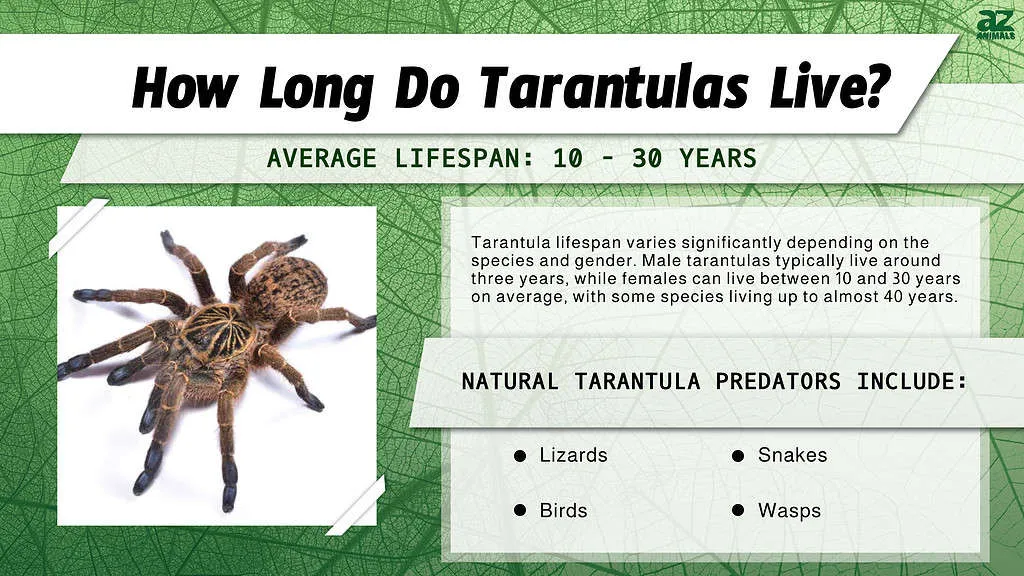
Male tarantulas typically live shorter lives. After reaching maturity, which can take a few years depending on the species, males will focus on finding a mate. This process, which includes wandering and often fasting, takes a toll on their physical condition. Furthermore, mating itself can be a dangerous endeavor, with males sometimes being eaten by the females after the process. Once the male tarantula reaches maturity, they often only live for 1-2 years. Therefore, a male tarantula’s entire life cycle, from hatching to death, is significantly shorter than that of a female.
Female Tarantula Lifespan
Female tarantulas, on the other hand, have a much longer lifespan. They mature at a slower rate, and once they reach adulthood, their focus is on reproduction and survival. Female tarantulas can live for over 20 years, with some species living even longer. With the proper care, including a balanced diet, a suitable environment, and minimal stress, a female tarantula can become a long-term companion, providing years of enjoyment for their owners. The difference in lifespan between male and female tarantulas is a crucial piece of information for any potential tarantula owner.
Species-Specific Lifespans
Different tarantula species exhibit significant variations in their lifespans. This is largely due to their genetics, metabolism, and the environments from which they originate. Some species have evolved to mature quickly and reproduce rapidly, leading to shorter lifespans, while others have slower metabolisms and longer developmental periods, resulting in longer lifespans. When choosing a tarantula as a pet, it’s crucial to research the specific lifespan of the species you are considering. Knowing the expected lifespan allows you to prepare for the long-term commitment of tarantula ownership and understand the specific needs of that species.
Fast-Growing Tarantula Species

Some tarantula species, such as the Grammostola and some of the Brachypelma species, are known for their relatively fast growth rates. These species tend to reach maturity quicker than others, which often correlates with a shorter lifespan. While their lives are shorter compared to other species, they still offer a unique and rewarding experience for their owners. These tarantulas are popular choices for beginners because they are generally docile and easy to care for, but their shorter lifespans mean they won’t be around for as long as some of the slower-growing species.
Slow-Growing Tarantula Species
In contrast, slow-growing species, such as the Theraphosa blondi (Goliath Birdeater), can live for decades. These tarantulas have slower metabolisms and a longer maturation process. Their extended lifespans mean that owning one of these species is a significant commitment. Providing the right care, including a well-maintained environment and a balanced diet, is essential to ensure these long-lived tarantulas thrive. For experienced tarantula keepers looking for a long-term companion, slow-growing species provide a fascinating opportunity to observe the entire life cycle of these incredible arachnids.
How Does Diet Affect Tarantula Longevity?
A tarantula’s diet plays a pivotal role in its overall health and longevity. Just like humans, tarantulas require a balanced and nutritious diet to thrive. The type and frequency of feeding directly influence their growth, molting cycles, and overall lifespan. Understanding the dietary needs of your tarantula, and providing a consistent and appropriate food source, is one of the most important aspects of tarantula care. The quality of the food is also a significant factor; fresh, high-quality insects are critical for providing the essential nutrients tarantulas need to live a long and healthy life. This can be done by using either live insects or by gut-loading the insects with supplements that contain vitamins and minerals.
The Importance of a Balanced Diet
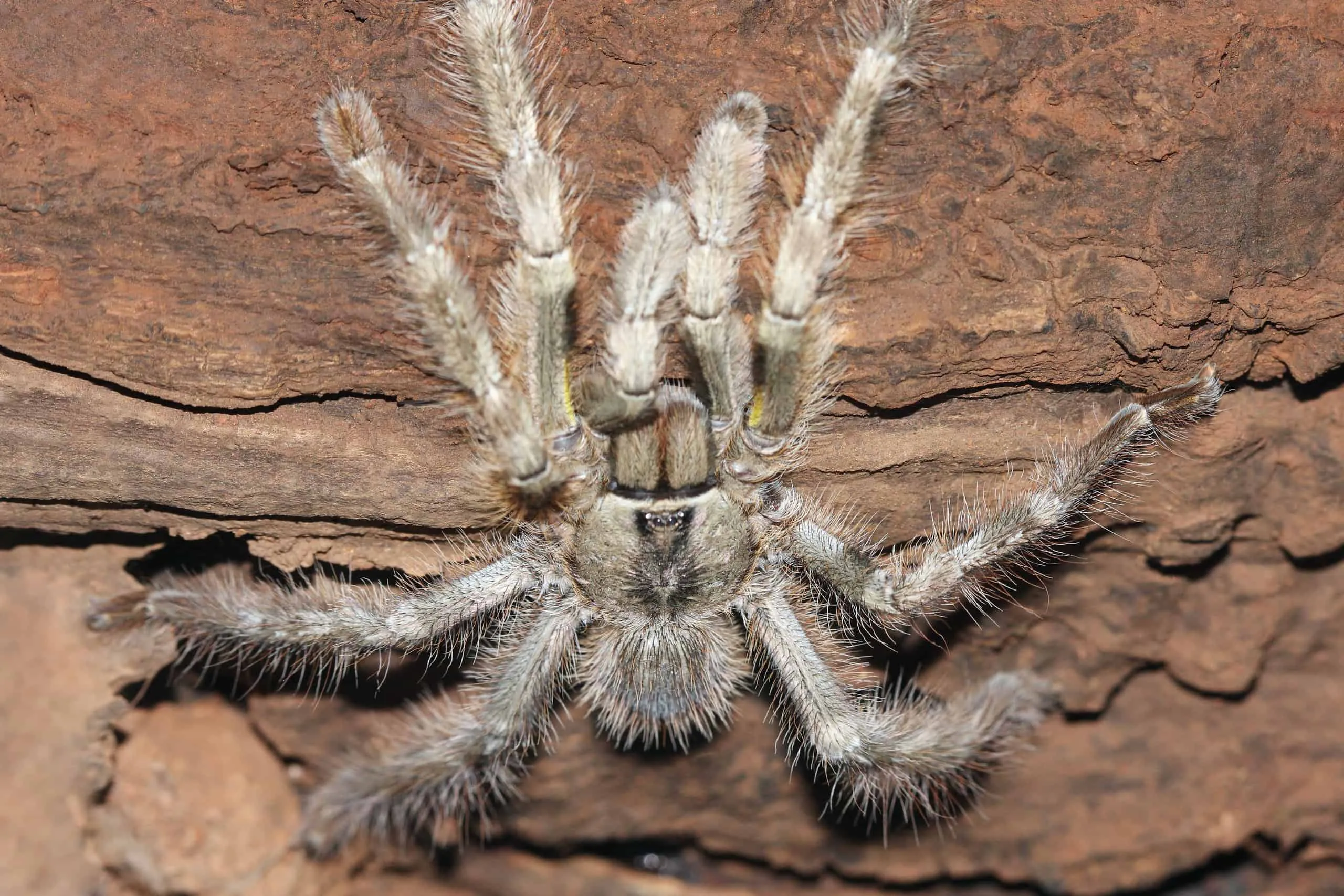
A balanced diet for tarantulas typically consists of insects like crickets, roaches, and mealworms. These insects provide essential proteins, fats, and other nutrients that tarantulas require to grow and maintain their bodily functions. In addition to a protein-rich diet, tarantulas need access to fresh water at all times. Dehydration can be a significant stressor and can shorten a tarantula’s lifespan. A well-balanced diet helps to support their immune system, making them less susceptible to diseases and other health issues, thereby contributing to their longevity. Avoid overfeeding your tarantula, as this can lead to health problems and reduce their lifespan.
Feeding Frequency and Quantity
The frequency and quantity of feeding depend on the tarantula’s age and size. Spiderlings (young tarantulas) require more frequent feedings than adults, as they are in a rapid growth phase. As they mature, the frequency of feedings can be reduced. Adult tarantulas can often be fed once or twice a week. It’s essential to adjust the feeding schedule based on the tarantula’s body condition. A tarantula that is too thin may need to be fed more often, while one that is overweight should have its feeding frequency reduced. Always remove uneaten food to prevent the build-up of mold and mites in the enclosure. Careful monitoring of your tarantula’s eating habits is crucial to ensure its well-being and longevity.
Environmental Factors and Their Influence
The environment in which a tarantula lives has a profound impact on its lifespan. Key environmental factors, such as temperature, humidity, and the size and enrichment of the enclosure, directly affect the tarantula’s health and well-being. Providing an optimal environment minimizes stress and supports the natural behaviors of the tarantula, which in turn, contributes to its long life. Creating and maintaining the right conditions is a fundamental aspect of responsible tarantula ownership, and a well-cared-for tarantula will generally live longer than one that is neglected.
Temperature and Humidity
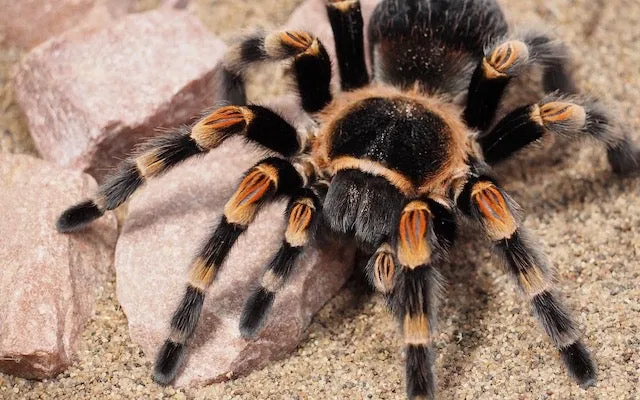
Maintaining the correct temperature and humidity levels in the tarantula’s enclosure is critical for its health. Most tarantula species thrive in a temperature range of 75 to 85 degrees Fahrenheit (24 to 29 degrees Celsius). It is also important to regulate the humidity levels. Too much humidity can promote the growth of mold and bacteria, while too little humidity can lead to dehydration and molting problems. Use a thermometer and hygrometer to monitor the environment regularly. Adjust the temperature and humidity as needed to create a comfortable and healthy habitat for your tarantula. Some species require higher or lower humidity, so research your specific species’ needs.
Enclosure Size and Enrichment
The size and enrichment of a tarantula’s enclosure also play a significant role in its lifespan. A tarantula needs enough space to move around and exhibit its natural behaviors. A cramped enclosure can lead to stress, which can weaken the tarantula’s immune system and increase its susceptibility to health problems. Enrichment in the enclosure, such as hiding places, climbing structures, and appropriate substrate, encourages activity and reduces stress. These additions can make your tarantula much happier. Providing a stimulating and comfortable environment helps to ensure the tarantula’s well-being and supports its longevity. The enclosure should mimic the natural environment of the tarantula species.
Common Health Issues and Lifespan Impact
Tarantulas, like all living creatures, can be susceptible to various health issues that can affect their lifespan. Understanding these potential problems and taking proactive measures to prevent them is essential for responsible tarantula care. While tarantulas are generally hardy animals, several conditions can significantly impact their health and longevity. Providing the right care and quick action when necessary can greatly increase your pet’s lifespan. It is crucial to remain vigilant and address health issues promptly to ensure your tarantula lives a long and healthy life.
Parasites and Diseases
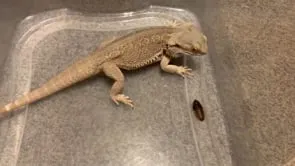
Tarantulas can be affected by parasites and diseases, which can shorten their lifespan if left untreated. External parasites, such as mites, can infest the tarantula and cause irritation, stress, and potentially transmit diseases. Internal parasites, though less common, can also pose a threat. Similarly, bacterial and fungal infections can impact a tarantula’s health. Prevention is key. Quarantine new tarantulas before introducing them to a collection, and provide a clean and hygienic environment. If you suspect your tarantula has a parasite or infection, consult a veterinarian experienced in exotic animals for diagnosis and treatment.
Moulting Complications
Moulting is a natural process for tarantulas, as they shed their exoskeleton to grow. However, moulting can be a vulnerable time for a tarantula, and complications during this process can be life-threatening. Issues such as failed moults, where the tarantula is unable to completely shed its exoskeleton, can lead to serious health problems. Proper humidity levels are critical during moulting, as the tarantula needs sufficient moisture to shed its old skin successfully. Avoid disturbing the tarantula during the moulting process and ensure the environment is stable. If you notice signs of a failed moult, seek advice from an experienced tarantula keeper or a veterinarian.
Maintaining a Healthy Tarantula
Maintaining a healthy tarantula involves a holistic approach to care, which includes providing the right environment, a balanced diet, and regular monitoring for any signs of illness or stress. This requires commitment, education, and a proactive approach. A well-cared-for tarantula is more likely to live a long and vibrant life. From providing the right humidity to keeping a watchful eye on the tarantula’s behavior and appearance, your care directly impacts their overall health. By understanding the specific needs of your tarantula and consistently providing the best care, you can maximize its chances of a long and healthy life.
In conclusion, the lifespan of a tarantula is influenced by a multitude of factors, including gender, species, diet, and environmental conditions. By understanding these aspects and providing appropriate care, tarantula owners can significantly contribute to the well-being and longevity of their pets. While the lifespan of a tarantula can vary, with some species living for decades, the commitment to providing the best possible care is always the most rewarding approach. With the right knowledge and dedication, you can enjoy many years with these fascinating and captivating creatures.
